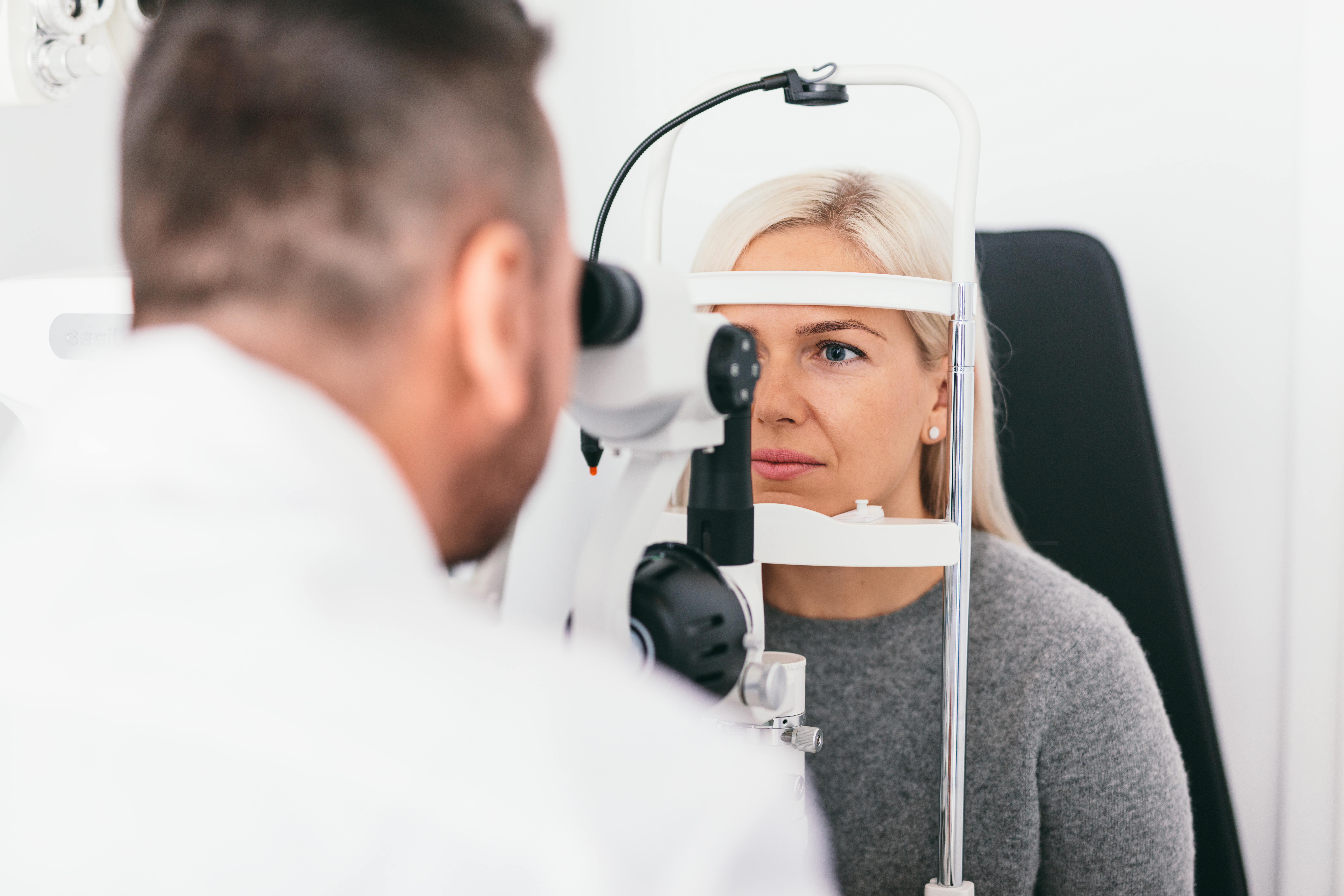Our eyes allow us to perform daily activities, enjoy the beauty of the world, and maintain our independence. Proper eye care is essential to prevent and manage eye conditions, as half of all sight loss is avoidable with early detection and timely treatment.
However, eye care services in Wales are under immense pressure. The former President of the Royal College of Ophthalmologists in Wales, Gwyn Williams, has warned of a looming “tidal wave of blindness” unless urgent improvements are made to specialist eye care delivery. This article examines this warning and the actions the Welsh Government is taking to reduce waiting times and prevent avoidable sight loss.
Lengthy waiting times
As of July 2024, 80,173 patient pathways, 50.7% of patients at the greatest risk of sight loss, were waiting longer than their target date for treatment.
In 2019, Wales became the first UK nation to introduce new eye care targets to prioritise those at greatest risk of blindness.
The Eye Care Measures for NHS outpatients introduce dedicated clinical prioritisation targets for ophthalmology where patients are given a maximum waiting time based on their level of risk and urgency (a “Health Risk Factor” (HRF)). Due to the significance of the consequences of delayed treatment, health board targets are for 95% of patients, who are categorised as being at the greatest risk of irreversible sight loss (R1 patients), should be seen within their target date.
The RNIB Cymru says the number of patients waiting beyond their target date for an appointment has more than doubled in the last five years.
The RNIB Cymru highlight that ophthalmology is the busiest outpatient specialty in the Welsh NHS, accounting for 1 in every 8 patients on the waiting list. The latest available data for June 2024 shows that 108,307 of the 791,511 patient pathways on the NHS waiting list in Wales are ophthalmology patients.
Val Robinson from the Macular Society told the BBC that there is “considerable anger” about the length of delays.
Rising Demand for Ophthalmology Services
Currently 112,000 people in Wales are living with sight loss. Figures from the Royal College of Ophthalmologists predict demand will increase by 30-40% in the next 20 years, with significant rises in cases of glaucoma, age-related macular degeneration, cataracts, and diabetic retinopathy.
The increase in demand for ophthalmology care is due to the rising population age (with 1 in 5 people aged 75 and over in Wales living with sight loss), greater public awareness about the importance of eye health, and new treatments for previously untreatable conditions.
Nearly-two thirds of people living with sight loss are women. This is primarily because women have a longer life expectancy and are more likely to develop age-related eye conditions. Additionally, women often face greater barriers to accessing eye care services., particularly in deprived areas.
Ophthalmology care ranges from conditions such as cataracts, where the lens of the eye becomes cloudy, to chronic lifelong diseases like glaucoma (optic nerve damage due to high eye pressure), macular degeneration (retinal damage) and diabetic retinopathy (retinal blood vessel damage).
The Covid-19 Pandemic’s Lasting Effects
Audit Wales highlighted in May 2022 that ophthalmology would be one of the specialties that would struggle to recover following the Covid-19 pandemic because it was already stretched pre-pandemic.
Additionally, the Royal College of Ophthalmologists highlights workforce shortages (for example, in 2022 half of NHS eye units in Wales did not have enough consultants to meet current patient need) and limited investment in infrastructure and clinical space are significant issues for ophthalmology services.
An NHS workforce briefing from Audit Wales shows that despite a 56% increase in referrals between 2012/13 and 2022/23, the ophthalmology workforce decreased by 2%. This represents the largest drop in capacity and highest increase in referrals of any medical specialism.
Welsh Government’s Response
The Welsh Government has initiated reforms to alleviate pressure on hospital-based eye services by expanding primary care optometry services. This includes expanding eye care services delivered by high street optometrists and introducing a new optometry contract. Secondary care services are also working with neighbouring health boards and the independent sector to enhance capacity.

The Welsh Government wants to make community optometry the first port of call in primary care for patients with eye problems.
Specsavers has raised awareness about ophthalmology waiting lists through their State of the UK’s Eye Health report, highlighting the glaucoma ‘emergency’ and the vital role of primary care in access to healthcare.
The RNIB Cymru says it supports the Welsh Government’s move to enhance community optometry services, which should reduce hospital waiting lists in the longer term. However, they stress the need to urgently address immediate risks, as a significant portion of the waiting list consists of the highest-risk patients who will need to receive care and treatment in an eye clinic.
Independent Review and developments since then
In 2021, an independent External Review of Eye Care Services in Wales was commissioned by NHS Wales and the Welsh Government. The review highlighted the need to reshape the model of eye care delivery and made recommendations for a sustainable future model.
Key recommendations include developing regional centres of excellence to attract and retain qualified staff and pool ophthalmic capacity, expertise, and technologies. The Royal College of Ophthalmologists in Wales described the regionalisation of services as ‘vital for survival of ophthalmic care in Wales’.
Following its publication, the then Health Secretary Eluned Morgan MS asked the eyecare community “to develop bold and ambitious plans” to tackle the growing number of patients waiting for eye care and transform the service in Wales.
In 2023, the Royal College of Ophthalmologists in Wales, in partnership with the NHS Wales Executive, were commissioned to produce a National Clinical Strategy for Ophthalmology. The strategy should set out the long-term blueprint for eye care in Wales and provide detail on how the recommendations of the External Review might be progressed.
The eye care sector has warned that “inaction risks the collapse of eyecare services in Wales” and described the National Clinical Strategy as “the last chance we have to plan a viable future for eyecare in Wales.”
A Blueprint for Eye Care in Wales?
It has been 3 years since the External Review highlighted the scale of the challenge. To date, there has been no commitment from the Welsh Government to implement the strategy or to make significant investments to tackle Wales’ growing eye care waiting list. There is still no national plan to reduce the number of patients who are losing their sight while waiting for NHS treatment.
National Eye Health Week takes place next week (23-29 September). It is likely that stakeholders will be hoping that the Welsh Government will publish its national strategy for eye health then.
Experts say it’s “urgently needed”.
Article by Sarah Hatherley, Senedd Research, Welsh Parliament






